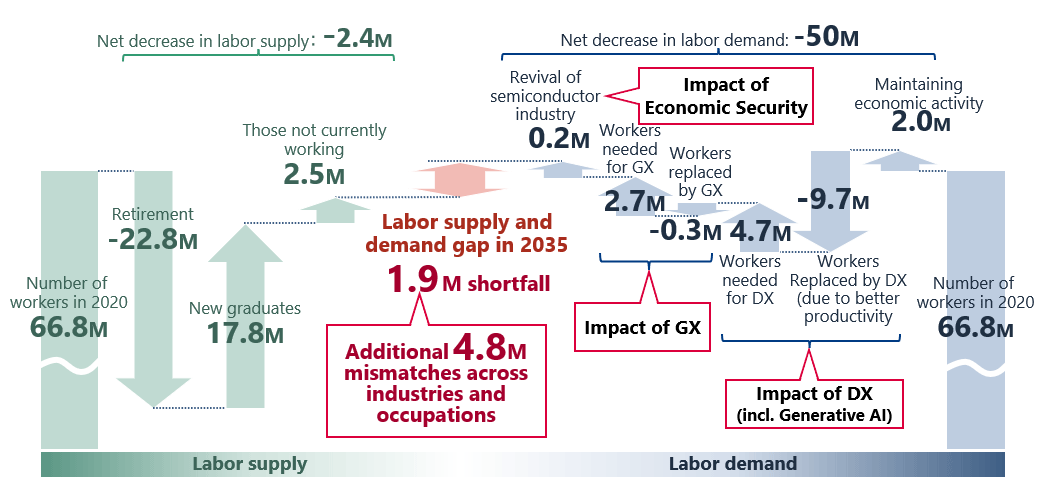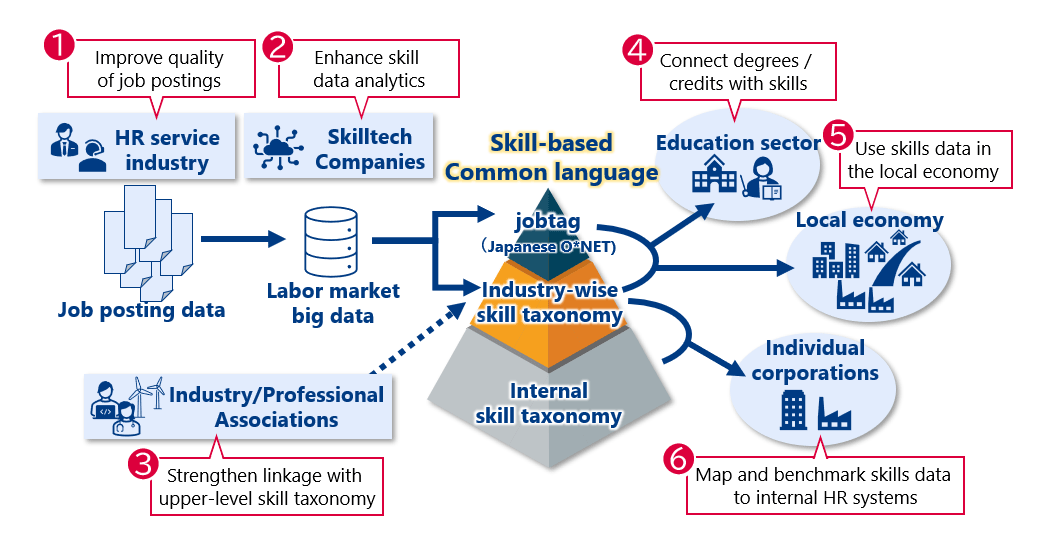Tokyo (September 13, 2023)—Mitsubishi Research Institute, Inc. (MRI) published new policy proposals for the Japanese labor market. The firm calls for a common skill-based language and accompanying reforms for Japan to invigorate its labor market and revitalize its workforce. The proposals are the results of joint research with American firm Lightcast and focus on the assessment of skills using labor-market big data.
The following is an overview of the report:
The following is an overview of the report:


